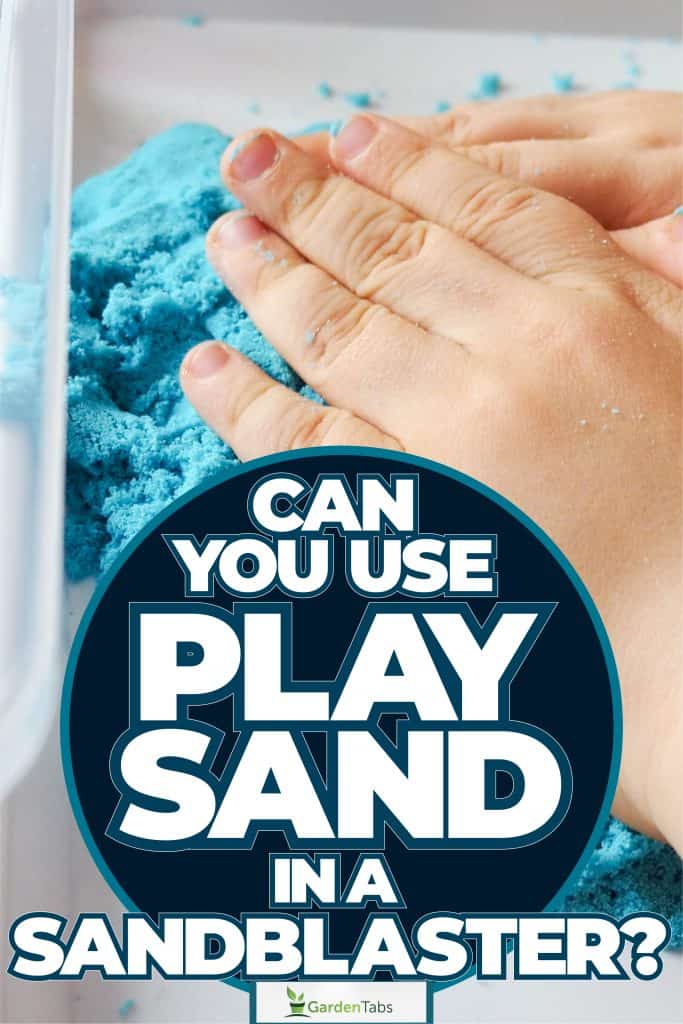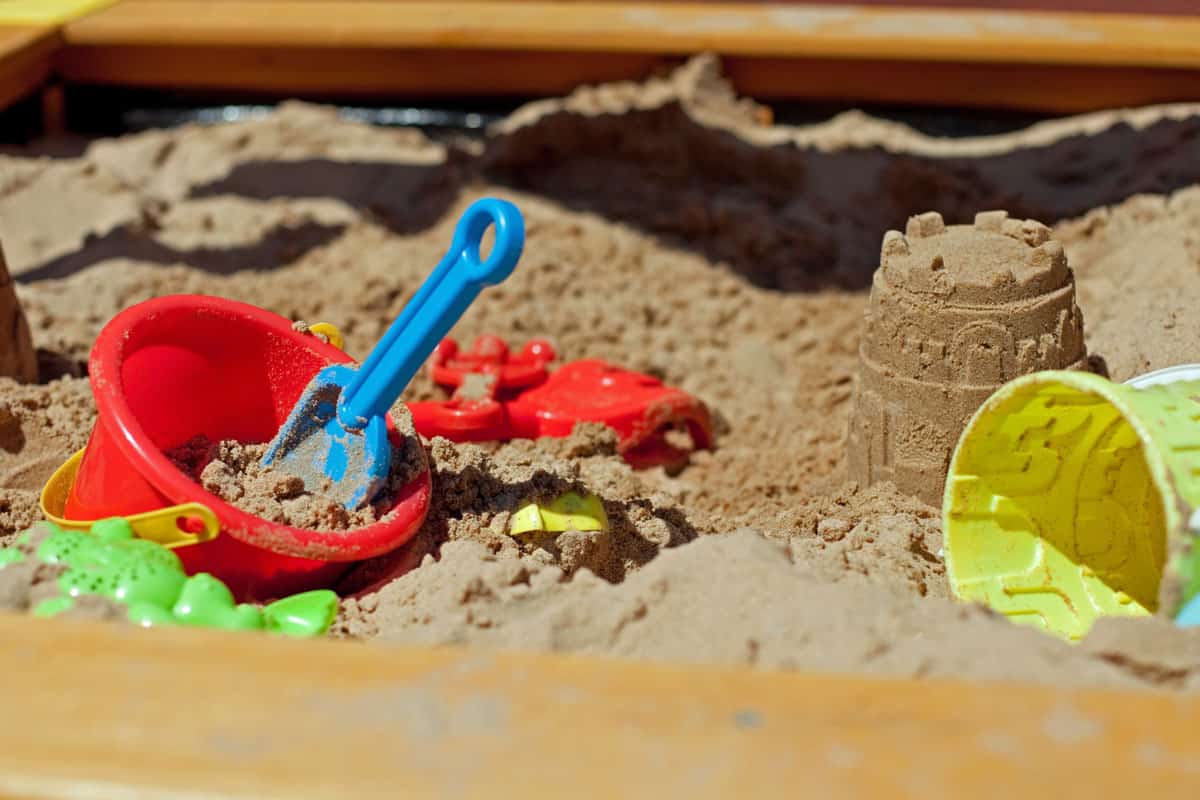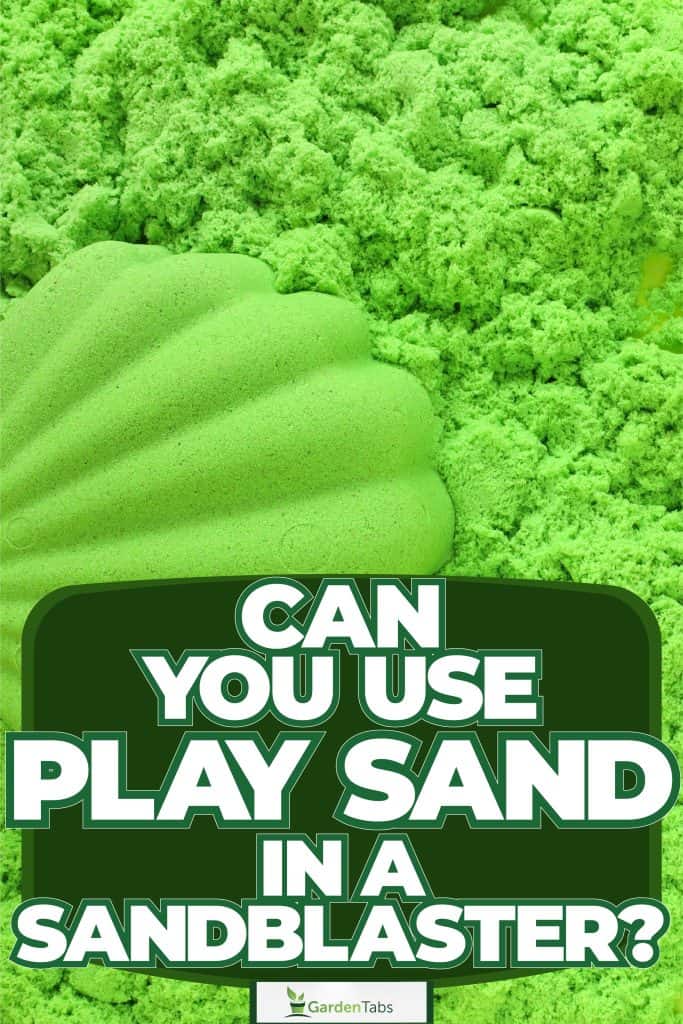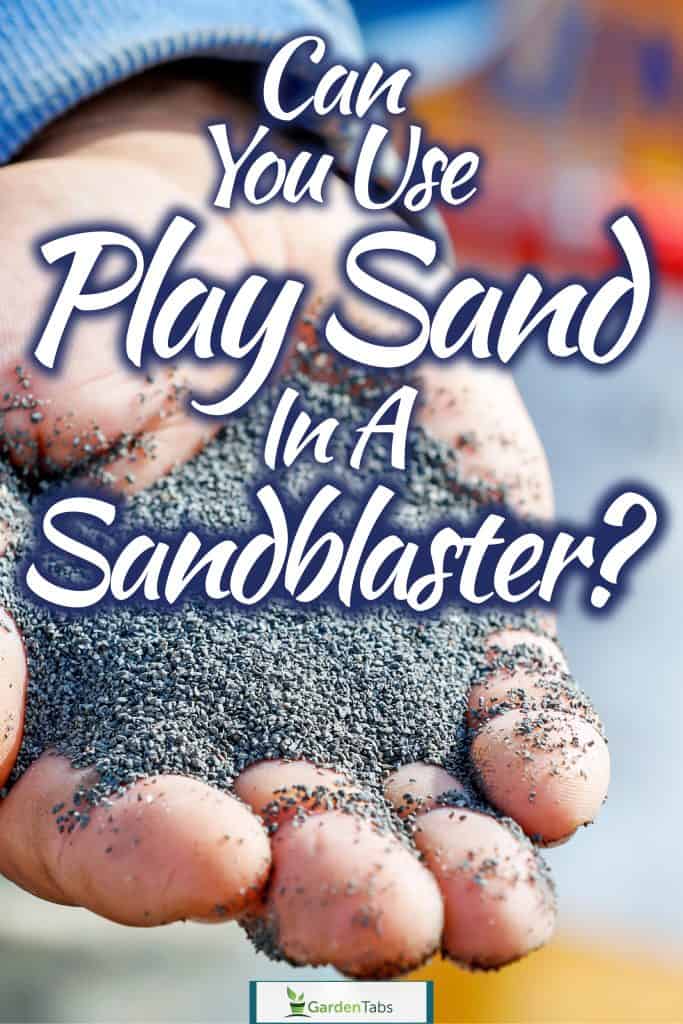If you've done sandblasting projects before, you'll know that sandblasting media can be expensive. You may have play sand your kid has been using for fun lying around in the garden, and now you're wondering whether it would work in your sandblaster. Wonder no more because we've done the research for you, and here's what we found!
Play sand can be an alternative for your sandblaster, although it is not ideal. Like regular sand, play sand contains silica that may harm your health when inhaled. Additionally, the grains may be too large or soft to provide the consistent abrasive effect needed in a sandblasting job.
While play sand can get the work done, it is not the best medium to use in a sandblaster for several reasons. It is essential to understand its limitations and how to use it safely and effectively in a sandblaster. This article will provide a comprehensive guide and a list of alternative sandblasting abrasives, so keep reading!

Using Play Sand In A Sandblaster
While you can use play sand in a sandblaster, you should ensure the sand is clean. Doing this will prevent any contaminants from being blasted onto delicate surfaces. To clean play sand, filter it through a fine mesh screen to eliminate debris before use.

Watch this video for a detailed visual guide on cleaning play sand for sandblasting.
The type of sandblaster you use will also impact how you use play sand. For example, heavy-duty sandblasters are better suited to cleaning large areas, whereas handheld sandblasters are better for detailed work.

Check out this LE LEMATEC Handy Sandblaster on Amazon.
Make sure the surface you are sandblasting is clean and dry before you begin. Check if you have the correct pressure and airflow settings.
Play sand, commonly found in children's sandboxes, play areas, and craft projects, is one of the most common abrasives used for sandblasting, along with silica sand, steel grit, and aluminum oxide. People use play sand in a sandblaster for several good reasons, but there are also some drawbacks.
Pros Of Using Play Sand For Sandblasting
Play sand is soft compared to other abrasives, which makes it ideal for delicate surfaces. It can get to the crooks and crevices effectively and doesn't create as much dust as other abrasives. Play sand doesn't contain many sharp particles, which reduces the risk of scratching the surface you are sandblasting.

Play sand's appeal to many as an abrasive comes from the fact that it's both cheap and widely available. You can buy a bag of play sand at any hardware store at a considerably lower price than some industrial abrasives in the market.
Are you wondering where else you can use play sand? Check out this post: Can I Use Play Sand To Amend Soil?
Cons Of Using Play Sand For Sandblasting
Play sand is light and easily blown away, making it more difficult to control and get a consistent blast. It also contains particles that are too large and irregular in shape, so it may not provide the best abrasive effect needed. Working with play sand may also be messy, as the sand and grit can get everywhere. There is also the risk that the sandblaster will start a fire if not used carefully.
Because of its finer grain than other sandblast materials, play sand takes longer to etch or clean the surface. Additionally, play sand may contain dirt, clay, and other impurities that can clog the nozzle of a sandblaster, leading to decreased performance and potential damage to the machine.
One major drawback to using play sand in a sandblaster is the risk of exposure to crystalline silica. But before you panic and tell your kid to stay away from that sandbox, the real issue comes when play sand gets pulverized during sandblasting. The process creates respirable particles that, when inhaled, can cause a severe lung disease known as silicosis.
Safety Tips

Here are the best practices when using play sand in a sandblaster:
- Wear protective clothing and equipment, such as goggles and gloves, when sandblasting. Also, wear ear protection, as the noise can damage your hearing over time.
- Always work in a well-ventilated area. Use a respirator when sandblasting to protect against dust and debris. Avoid sandblasting in direct sunlight or hot weather, as this can increase the fire risk.
- Be careful when sandblasting delicate or valuable surfaces. Make sure to test out a small area first.
- Regularly clean your sandblasters when using play sand.
- As mentioned, play sand is a very lightweight abrasive, so the pressure you are blasting will be much lower than when using a heavier abrasive. While this can be advantageous in some situations, it can also make sandblasting more difficult. You will need to adjust your settings accordingly.
Alternatives To Play Sand For Sandblasting
Play sand works well for light etching and cleaning some surfaces, but there are better materials for deep cleaning or heavy-duty work. Additionally, play sand may also cause severe illness when misused.

Before choosing the right abrasive for your needs, you should consider how often you'll be using your sandblaster, the type of surfaces you'll be working on, and the contaminants you're trying to remove. We have listed some alternatives to play sand below.
Baking Soda
Baking soda is one of the most commonly used abrasives for sandblasting. It is non-toxic and biodegradable, making it an ideal choice for sandblasting. It is also cheaper than other abrasives, so it is attractive from a cost perspective. Baking soda is also very effective at removing paint, rust, and other materials from surfaces. It is safe on various materials, including wood, metal, and plastic.
Aluminum Oxide
If you want a more durable alternative to play sand, aluminum oxide grit is one popular choice. It is a much stronger abrasive than play sand and is good to use at higher pressures. It helps strip paint but has many other potential uses, including abrasive blasting, grinding, and floor coatings.
Click here to see this 3.6kg Aluminum Oxide on Amazon.
Organic Abrasives
Organic abrasives are suitable for delicate sandblasting projects. They are usually made from crushed walnut shells or corn cob grit. However, they are less effective in removing paint on surfaces. Organic abrasives are also cheap because the materials used would otherwise be considered waste.
Glass Beads
You can use glass beads to remove rust, paint, and scale from metal before painting or powder coating it. This type of abrasive is available in a wide range of sizes.
Is Wet Sandblasting Better Than Dry?
Wet sandblasting is often preferred over dry sandblasting because it is more productive and less hazardous. In addition to efficiently removing impurities and other residues, wet blasting also leaves behind a better finish on a surface profile, which improves the adhesion of fresh coatings and paint.
Wet sandblasting does not require using as much media as traditional sandblasting. It also produces lesser dust than traditional sandblasting.
Why Is My Sandblaster Not Working?
Check that the sandblaster is clean and not clogged up. Clogged nozzles are the most typical cause of abrasive not ejecting from the hose. Sometimes, debris that fell into your machine and vacuumed up the hose might become stuck in the nozzle's exhaust vent.
Also, always check that the air pressure in your sandblaster is sufficient. However, it's not always the case that more pressure results in more effective blasting.
What Can You Use Instead of Sandblasting?

Conclusion

While play sand is a cheap and widely available abrasive, it is important to be aware of some safety considerations when using it in a sandblaster. Play sand is suitable for surfaces, including delicate items, when used correctly. The abrasive you can use will also depend on the sandblasting job you want to do.
If you enjoyed this article, you might also want to read this other post:



